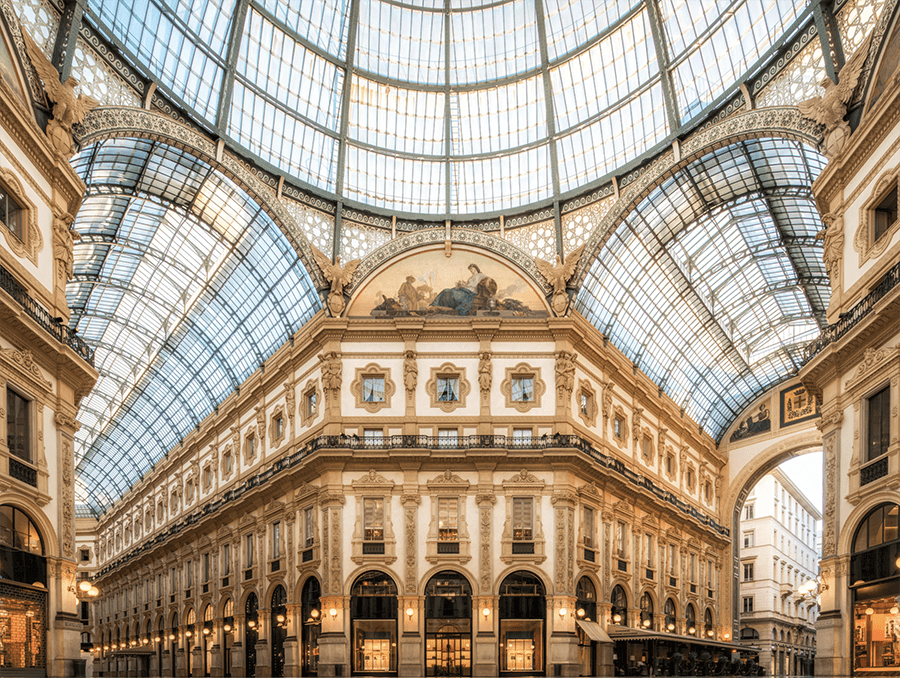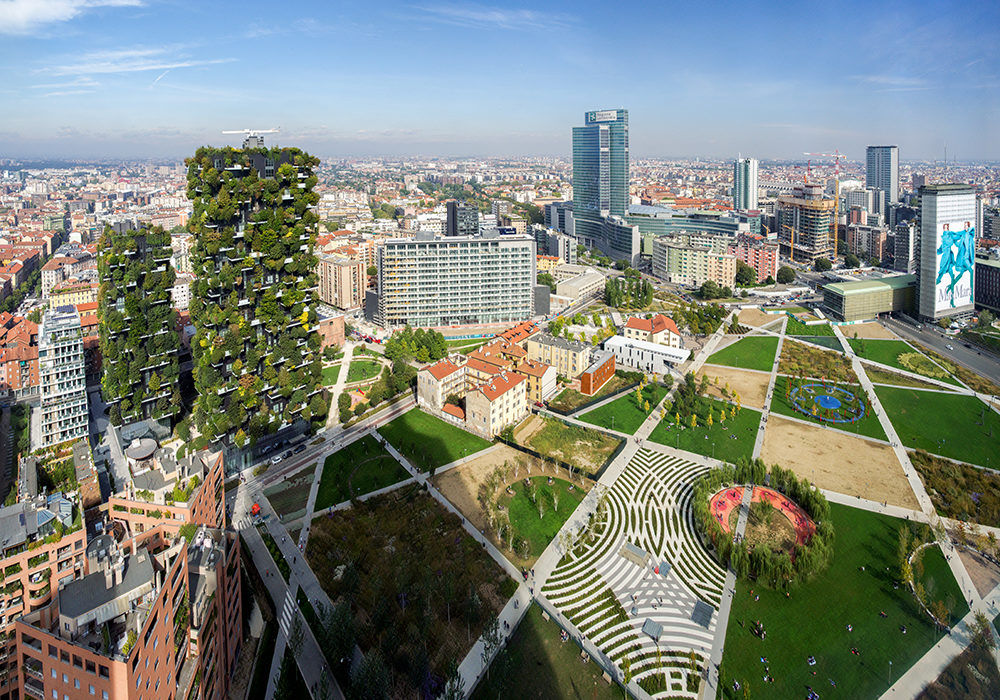New Gems of Italian Hospitality in 2024: From Florence to Capri, Here Are the Unmissable Hotels
Among the New Year’s resolutions, the enthusiasm for exploring new places and enjoying a bit more luxury during travels is inevitable. Tourist destinations in Italy are enhancing their offerings, with historic hotel groups and smaller boutique hotels ready to welcome tourists with high-quality services, pampering, and captivating designs.
Here’s an overview of the most anticipated hotels in Italy in 2024.
Florence: Collegio alla Querce, a Garden Hotel with a View of the Duomo
Auberge Resorts Collection expands to Florence with a complex that encompasses three 16th-century buildings, complete with original chapel and theater. In the former preparatory school, a new hotel with 61 rooms, 20 suites, and a 210-square-meter master suite has been created. Guests can enjoy baroque gardens overlooking the Duomo on one side and lush Chianti vineyards on the other. The heart of the hotel is an internal garden illuminated by a skylight, adorned with lemon trees, and featuring an impressive fireplace. Collegio alla Querce offers a complete experience with a restaurant, a glass-enclosed garden room, a bar, a cigar lounge in the former admissions office, and a poolside bar offering unique wood-based cocktails.
Florence: Anglo American Hotel Florence, Charm, and Sustainability
Hilton’s Curio Collection presents the new Anglo American Hotel Florence in the historic center of Florence. The structure reflects the city’s majestic charm and places particular emphasis on sustainability, with the restoration of original architectural features. The hotel’s outdoor courtyard hosts a Tuscan menu inspired by local flavors and traditions.
Milan: Max Brown Missori, Milanese Style and ’70s Vibes
The Dutch boutique hotel group Max Brown makes its entrance in Italy with a 64-room hotel in Milan, Max Brown Missori. The mission to infuse the cheerful and refined style of Sircle Collection was entrusted to interior designer Saar Zafrir, who, in collaboration with the in-house design team, renovated and redesigned the property drawing inspiration from ’70s vibes. Most of the original furniture has been restored, while others have been donated to local charities. Max Brown Missori aims to be a welcoming and charming place for travelers wishing to immerse themselves in Milanese life like true locals. For this reason, Italian-made details like colorful SMEG kettles will be incorporated, along with items from around the world, such as a Crosley turntable in each room, and communal spaces designed to encourage social moments (e.g., a basketball court). With many rooms overlooking the Garage delle Nazioni, the hotel also offers a lively ground-floor area ideal for meetings, rest, or work.
Milan: Calimala, a Surprise in the Shadow of the Madonnina
Born in Florence, where it boasts one of the best rooftops in the city, Calimala opens a second hotel in Milan, near Porta Venezia at Via Melzo 7. This will be a 90-room hotel with a gym, 2 rooftops, a bar, a restaurant, and a pool. Little is known yet, but if the style mirrors that of Florence, we can expect interiors dialoguing between historic structures and modern furnishings.
Rome: Casa Monti, an Artistic Residence Celebrating the Dolce Vita
The Leitmotiv family-managed group will debut in spring in Rome with Casa Monti. The new hotel will pay tribute to the Rione Monti, with its craft shops, wine bars, and contemporary art galleries. The five-star hotel will consist of 36 rooms, a restaurant, an aperitif bar, a terrace, and a spa with a panoramic view of the city. The design is by Laura Gonzalez, conceived as an artistic residence open to the world and the city, celebrating the sweet life, inspired by the muse of Rome and its neighborhood. Casa Monti draws from a vibrant community and celebrates eccentricity and pleasure. A color queen, Laura Gonzalez was the right person to interpret that feeling of relaxation and nonchalance that the world envies us.
Rome: Romeo, Between Zaha Hadid and the Sixteenth Century
The Romeo collection, launched in 2023, is making giant strides to become one of the benchmarks of Italian hospitality, thanks also to renowned international architects. The project for the new hotel in Rome is signed by Zaha Hadid Architects and is nestled in a distinctly Italian sixteenth-century palace not far from Piazza del Popolo, once the residence of the Serroberti-Capponi family and now ready to offer dream stays. The studio has had the opportunity to reinterpret its “no stairs-no texture” motif here in an entirely new way: the use of Italian marbles and precious woods creates a new dialogue with the city of Rome, expressed in the 74 rooms and suites, with magnificent views and original frescoes restored to their former glory. The hotel also boasts Il Ristorante, a gastronomic venue directed by Alain Ducasse, the world’s most starred chef. Romeo Roma also has a courtyard with an indoor and outdoor pool, from which you can admire the archaeological ruins. The offer is completed by site-specific installations by renowned contemporary artists, a rooftop lounge bar, and La SPA Sisley Paris.
Rome: Corinthia, Michelin-starred Cuisine under the Frescoes
Corinthia also announces a new opening in the Eternal City, scheduled for summer, in Piazza del Parlamento. The former headquarters of Banca d’Italia, built in 1904, welcomes with an imposing entrance into the two-story lobby. Ensuring hospitality excellence, from food to room service, will be Carlo Cracco. With such a name, it was imaginable that the cuisine would play a central role, and indeed, the ground floor is animated by a restaurant surrounding the garden. The interiors were created by G.A Design, and there are 60 rooms and 21 suites, a rooftop, a luxury spa. The environments have been preserved with original chandeliers and classic marbles, renewed, however, with elements of a more modernist taste. The hotel’s Signature Suites will have private balconies with views of the elegant square and the city’s majestic monuments. Guests will also have access to a spa with a vitality pool, relaxation area, sauna, steam room, and treatment rooms. The Historic Suite, the hotel’s most exclusive, will feature marbles in all its parts (starting with the sculpted bathtub) and full-wall windows.
Rome: J.K. Place Residence Club, a New Way to Stay in the City
A great mystery also surrounds this boutique hotel that will open inside a noble 17th-century Roman palace, once the seat of the architecture faculty, a short walk from Piazza di Spagna. The hotel will be accompanied by the Residence Club consisting of 15 new apartments on Via dei Prefetti, designed by the Florentine architect Michele Bonan. Each Residence will have a butler and a private concierge service, while among the common areas there will be a restaurant, a private lounge, and a state-of-the-art gym, open to both club members and guests staying at J.K. Place Roma.
Capri: Grand Hotel Quisisana, a Rich History Update
Since 1860, the Grand Hotel Quisisana has been synonymous with the splendor of Capri, its sea, and its exclusive clientele. Originally built in 1845 as a sanatorium (as the name suggests), the hotel is rich in history and features a Liberty-style theater designed by Giò Ponti in 1929. Over the years, figures like Ernest Hemingway and Jean Paul Sartre have crossed the marble lobby and admired the beauty of the park. The sun-drenched bedrooms are the quintessence of maritime leisure, with bright floors and furnishings emphasizing the view. For the 2024 season, there are many novelties, starting with the Colombaia restaurant, offering Italian-inspired cuisine and an extensive wine list. An outdoor pool, tennis courts, and new rooms will also be inaugurated. Equally important is the completion of the transition to solar water heating and the production of 100kw, the largest private solar production in Capri.
Source: Elle Decor





